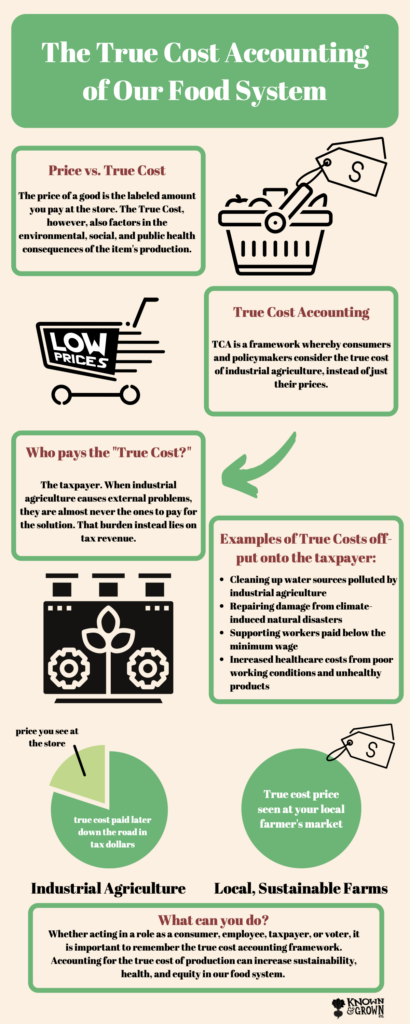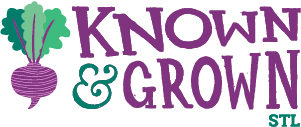How much does it cost to buy a loaf of bread, go to a fast-food restaurant, or order from a pizza chain? Due to industrial agriculture, food can be purchased at rock-bottom prices. Bread fetches prices as low as $2 a loaf. A fast-food meal combo can cost only $5. It’s possible to order a large pepperoni pizza for just $9.99, and they may even throw in an extra one for free.
You might look at these prices and see evidence of a healthy economy that can offer a lot of people relatively cheap food. But when discussing the value of our food, it is important to know the difference between the price of the product and its true cost. The price of something is the amount of dollars a person actually spends on it at the store. For example, someone at the grocery store might hand over $2 for a loaf of bread. The true cost of a product, however, factors in the larger environmental, social, and public health consequences of the item. When practicing true cost accounting, consumers and policymakers don’t only consider the labeled price attached to the item; they also think about the unfair costs in its production.
There are many examples of extra costs that are not factored into the labeled price of a product you see at the store. Large food corporations may pollute the surrounding water and air but not necessarily pay for its cleanup. They might pay their workers a salary below the living wage but also won’t pay the funds required to keep them above the poverty line. They may decide to use unhealthy ingredients and have unsafe working conditions in their factories, but may not pay the healthcare costs resulting from these decisions.
If the corporations causing all these extra costs are not paying for them, then who is? The answer is you and me – through our tax dollars.
To understand this, let’s look at the large pepperoni pizza example. A large pizza corporation might produce its pepperoni through a Concentrated Animal Feeding Operation (CAFO). When making the pepperoni, the company only pays the price of raising animals for slaughter, not the true cost of the CAFO. The consequences of potential water contamination or excess greenhouse gas emissions from livestock may not be paid for by the company. Instead, it is taxpayers’ dollars that are used to fund government clean-up of water sources or respond to climate-induced natural disasters. Similarly, it is likely that many CAFO workers, employees at meat processing plants, and workers at the pizza company itself may not be paid a living wage. As such, many of them likely require government assistance to survive. The cost of this assistance falls on the taxpayer, not the corporation that caused the problem. The same is true regarding public health. When the company has an unsafe work environment that increases the chance a worker might get hurt, they are often not required to pay the increased cost of healthcare. By using unhealthy ingredients or by contaminating the environment, the company also hurts the health of its community, yet citizens are the ones who end up paying the cost of more frequent doctor visits and medical bills.
Local, sustainable farms avoid delaying true cost payments for a later date. By using practices that have a low impact on the environment, these farms do not put the burden of their true production costs on the unsuspecting taxpayer or on communities. Further, when local farms keep their food dollar profits in circulation in the local economy, it is the local community members who benefit, not outside corporations that keep the revenue and leave behind the cost.

Food should not be expensive, especially when considering those who suffer from food insecurity and need access to cheap ingredients. Because of the lack of true cost accounting throughout our food system, producers that do the most harm – both environmentally and socially – manage to sell at the lowest prices. More often than not, these institutions overpower local, sustainable producers that sell at the true cost. We need to do everything in our power to change this dynamic. Whether acting in a role as a consumer, employee, taxpayer, or voter, it is important to remember the true cost accounting framework. Accounting for the true cost of production can increase sustainability, health, and equity throughout our food system.
-Will Slatin


